Share
Writing Killer Captions for Travel Photography
Although great images can often stand on their own, a caption can provide context and background information that greatly enhances a picture. In th...

Although great images can often stand on their own, a caption can provide context and background information that greatly enhances a picture. In the realm of stock photography, a caption can often make the difference between selecting a photo or not because publishers often rely on the written word as a way to verify what is depicted in the image.
Travel imagery is a popular content submission area for PhotoShelter, and is also an area where the strength of a caption can make the difference between acceptance and rejection. Here’s some guidance.
Captioning Style
Captions are required for all News+ images, and are very important for travel imagery. Although captions help our photo editors identify the subject of photos, their intended audience is the photo buyer. As such, it’s important to maintain uniformity and professionalism in the creation of the caption.
Captions (AP Style preferred) should answer the who, what, when, where and why of the subject depicted in the photograph. Captions should be written in English in the present tense and include a date.
Typically, captions are written in two parts. The first sentence describes the subject/action depicted in the image, while the subsequent sentences give context to the image.
First Sentence:
Los Angeles, CA, Jun XX, 2006- Virginia Nguyen is crowned Miss Vietnam USA 2006.
This first sentence effectively conveys who is depicted, but a picture of a girl in a gown and crown doesn’t provide the viewer with much context. Is this a small event? A world-renown event? Is it historically significant?
Two Sentences:
Los Angeles, CA, Jun XX, 2006-Virginia Nguyen is crowned Miss Vietnam USA 2006. The pageant is in its fifth year and celebrates the accomplishments of Vietnamese-Americans.
Sentence or Phrase?
Travel captions don’t necessarily have to be a full sentence, but it should at the very least be a descriptive phrase.
Bad (soft reject):
Cave in Petra
Better:
Cave entrance near the Siq in Petra, Jordan
Verb Tense
Captions should be written in the simple present active form.
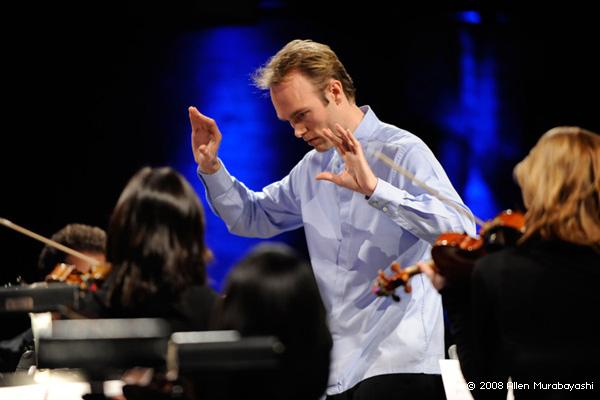
Best:
Paul Haas conducts the SymphoNYC orchestra at the premier of “Traces” in New York, NY.
Avoid the present progressive (gerund)
Bad:
Paul Haas is conducting the SymphoNYC orchestra at the premier of “Traces” in New York, NY.
Avoid past tense construction (particularly in the first sentence)
Bad:
Paul Haas conducted the SymphoNYC orchestra at the premier of “Traces” in New York, NY.
The second or subsequent sentences can contain past tenses.
Paul Haas conducts the SymphoNYC orchestra at the premier of “Traces” in New York, NY. Haas founded SymphoNYC as a new way to present classical music in the 21st century.
Point of View (aka Grammatical Person)
Captions should be written in the third person, and should not editorialize. Do not use “I,” “me,” “we,” etc.
Bad (soft reject):
Big Ben at dusk. I visited Big Ben in the Summer of 2007 with my family, and we enjoyed it very much.
Better:
Big Ben at dusk, London, UK, 2007
“This is a photo of…”
There is no need to preface a caption with a phrase like “This is a photo of,” as a photo is obviously a photo of something. Please refrain from using extraneous and unnecessary phrases.
Bad (soft reject):
This is a photo of the Olympic Stadium in Beijing.
Better:
The Olympic Stadium in Beijing, China under construction in anticipation of the 2008 Summer Games.
Keywords are not a Caption
PhotoShelter has both a keyword and a caption field with specific uses. The caption field should not be a string of comma separated words. The caption should be a phrase, or a sentence in intelligible English.
Bad (soft reject):
Pyramids, Egypt, Desert
Better:
The Great Pyramid of Giza borders Cairo, Egypt. The pyramid is believed to have been constructed in 2560 BC as a tomb for the Fourth Dynasty pharoah Khufu.
Landmarks
Even well-recognized landmarks/locations need to be captioned properly for the editors to review the image. Captions should be formulated as complete phrases and answer the who/what/when/where of the image.
Bad (soft reject):
Central Park, New York.
The caption is too brief and lacks specificity for such a large landmark. This “caption” is more appropriate for keywords.
Better:
A north-facing view of Sheep’s Meadow in Central Park, New York, NY in the fall of 2007.
This caption succeeds because of the style and specificity.

Photo researchers are highly dependent on accurate captions, and when a picture buyer is scanning through thousands of thumbnails, a caption can be instrumental in the selection of a particular image. Whereas keywords are very helpful in search for an image, the caption often gives the specificity that allows a photo editor to use it.
More Landmarks, Statues, Artwork
Very famous landmarks do not require an artist name (e.g. the eponymous Eiffel Tower), however, when photographing contemporary or non-universally recognized landmarks, you should provide a name of the work and/or the artist.
Bad (soft reject):
A hanging sculpture
Better:
Alexander Calder’s Red Lily Pads hangs in the atrium of the Guggenheim Museum in New York, NY.
Many religious structures share common names, so providing the city/location clarifies the ambiguity.
Bad (soft reject):
St. John’s Cathedral
Better
The façade of St. John’s Cathedral in New York, NY.
Buildings & Houses
We receive a very large number of images of three buildings, or a colorful home in various countries. Although these buildings might be indicative of a style or movement of architecture, more information is needed.
Bad:
Modern office buildings in Dallas, TX.
Colorful houses in Cape Town, South Africa.
Better:
The Bank of America building in Dallas, TX is the city’s tallest building, and features a modern glass façade.
Colorful houses in Bo-Kaap, South Africa, line the streets atop Signal Hill in a predominantly Muslim neighborhood.
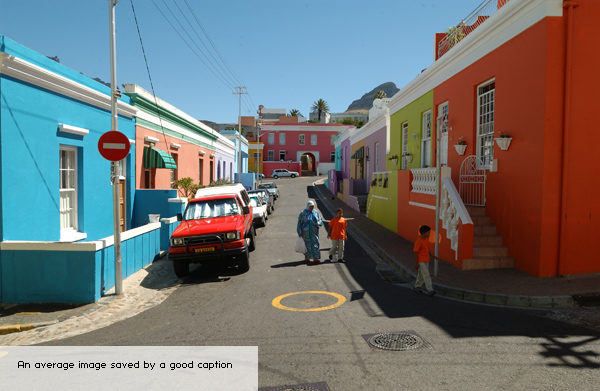
Matching the caption with the image
Batching a single caption onto multiple images can obviously lead to some issues of congruence of images, and should be avoided. But there are also more subtle matching issues.
For example, the caption indicates:
paddle steamers moored in Darling Harbour,Sydney,Australia.
But the paddle steamers are on the far right, and there are no viewable paddles, so the caption creates more questions than it answers. The photo also lacks a central subject, so even though it have no inherent technical flaws, its composition is poor.
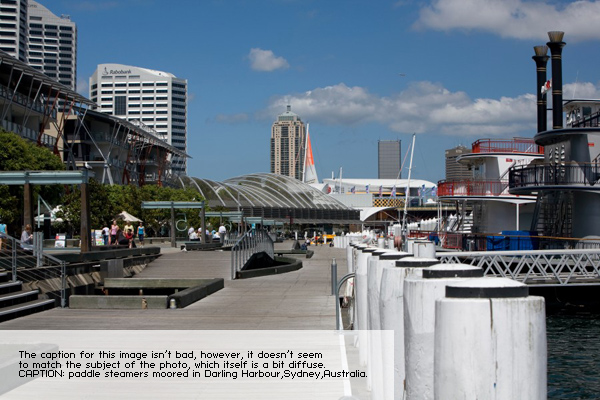
Soft Rejection
The PhotoShelter editing system requires an editor to provide a reason when an image is soft rejected. The editors typically select an answer from a library of common issues, and in some instances will write a specific note about a photo. If you ignore the soft rejection and resubmit the photo, we will hard reject the image.
A bad caption can sink a decent (or interesting) image

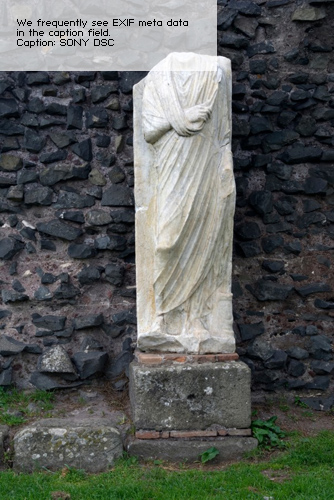
A good caption can enhance a decent image or save an imagethat might otherwise be rejected
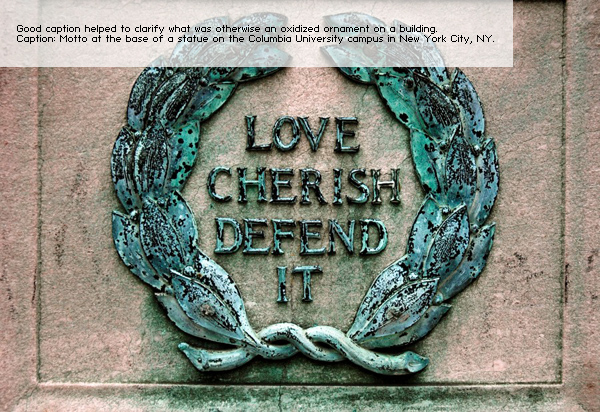
FAQ
Why did you soft reject my image, ask me to provide a caption, then reject my image once I did the work?
When we requested the caption, we were unable to identify what we were looking at. The caption clarifies the subject matter, but we might have saturation in that area, or might deem the subject matter too niche.
For example, you might have sent us a photo of a beach that we initially soft rejected. Your caption might have indicated “Girl on the beach in Hawaii.” If we feel that the subject matter is too generic, too niche in nature, or you are unable to provide specific caption information (that would make the image potentially more salable) we might reject it.
The Poytner Institute is a school for journalists. They cover a wide range of topics from ethics to captioning.
http://poynter.org/column.asp?id=47&aid=64940
http://poynter.org/content/content_view.asp?id=4355
The Associated Press publishes a style guide that is the standard for many journalistic organizations.
http://www.apstylebook.com/
Jim McNay is a monthly judge in the SportsShooter Student contest. Many of his comments instruct students to pay attention to caption quality.
http://www.sportsshooter.com/student_portfolio/index_new.html


